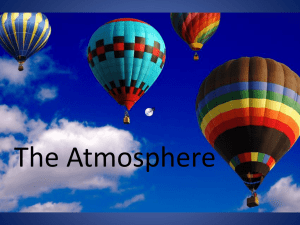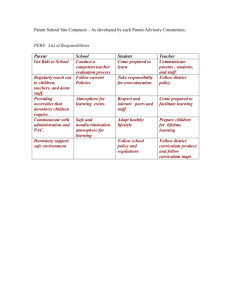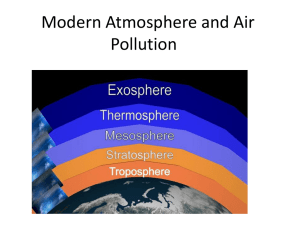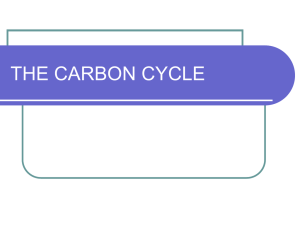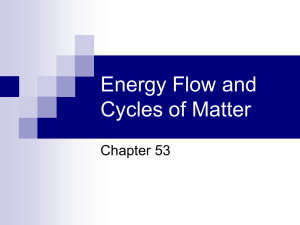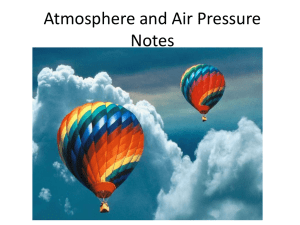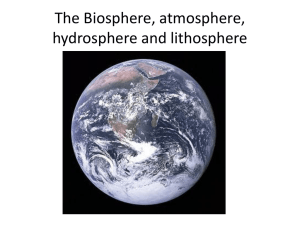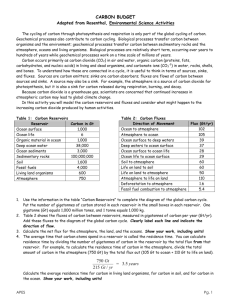Answers
advertisement
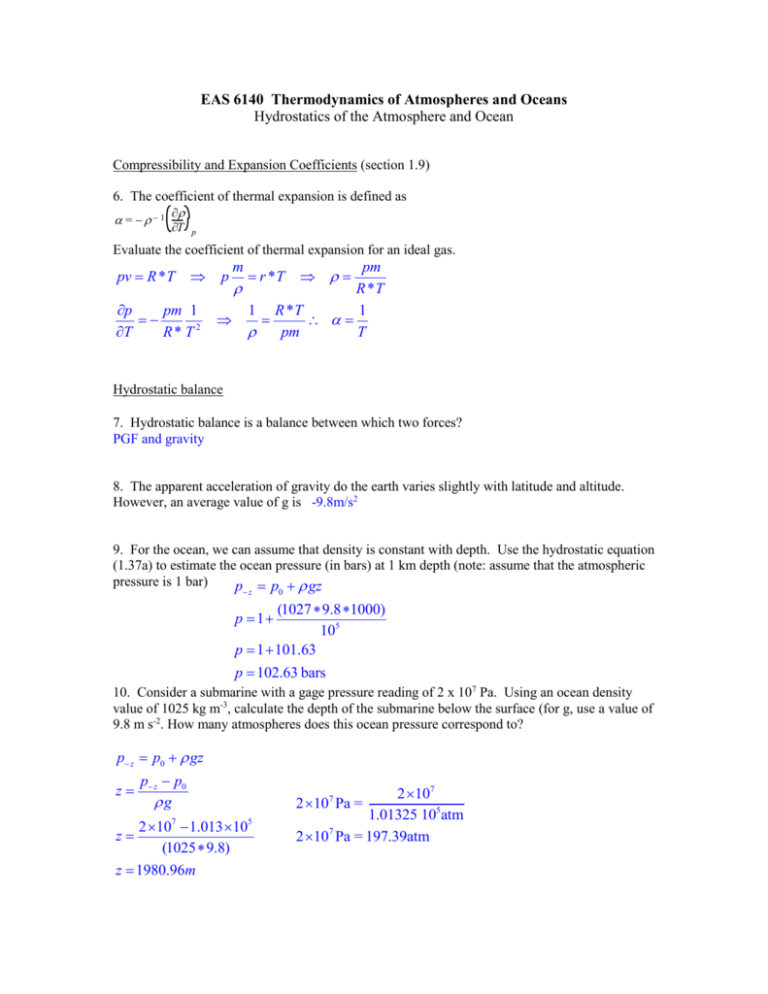
EAS 6140 Thermodynamics of Atmospheres and Oceans Hydrostatics of the Atmosphere and Ocean Compressibility and Expansion Coefficients (section 1.9) 6. The coefficient of thermal expansion is defined as = 1 T p Evaluate the coefficient of thermal expansion for an ideal gas. pv R * T p pm 1 T R* T2 pm R *T 1 R *T 1 pm T p m r *T Hydrostatic balance 7. Hydrostatic balance is a balance between which two forces? PGF and gravity 8. The apparent acceleration of gravity do the earth varies slightly with latitude and altitude. However, an average value of g is -9.8m/s2 9. For the ocean, we can assume that density is constant with depth. Use the hydrostatic equation (1.37a) to estimate the ocean pressure (in bars) at 1 km depth (note: assume that the atmospheric pressure is 1 bar) p p gz z 0 (1027 9.8 1000) 105 p 1 101.63 p 102.63 bars p 1 10. Consider a submarine with a gage pressure reading of 2 x 107 Pa. Using an ocean density value of 1025 kg m-3, calculate the depth of the submarine below the surface (for g, use a value of 9.8 m s-2. How many atmospheres does this ocean pressure correspond to? p z p0 gz z p z p0 g 2 107 1.013 105 (1025 9.8) z 1980.96m z 2 107 2 10 Pa = 1.01325 105atm 2 107 Pa = 197.39atm 7 Derivation of the scale height of the atmosphere, H: 1. Write the hydrostatic equation (in differential form) dp gdz 0 H sp 0 dp g dz 2. (refer to p 28) In the real atmosphere, with density decreasing with height, there is no defined top of the atmosphere. However, if the atmosphere had constant density with height, then the atmosphere would have a finite depth, H. a) Assuming a constant density for the atmosphere, integrate the hydrostatic equation from the surface to the top of the atmosphere. p0 gH Write an expression for H in terms of b) po, the surface pressure H= p0 g c) To, the surface temperature H= Rd T0 g 3. Derive an expression for the lapse rate of the constant density atmosphere (by differentiating the ideal gas law with respect to z). Calculate this lapse rate. Compare it with the average lapse rate observed in the atmosphere. T g 34.1 C / km z Rd avg 6.5 C / km Isothermal atmosphere and the hypsometric equation 4. (refer to p. 29) Consider an atmosphere whose temperature is constant with height (note this atmosphere does not have a finite depth). a) Integrate the hydrostatic equation for a constant temperature atmosphere, from (z=0, p=po) to (z,p). (Hint, you will need to use equation of state) p z p0 0 dp g dz dp g p0 p Rd T p ln z 0 dz p gz p0 Rd T b) Write an expression for the variation of pressure with height in the constant temperature atmosphere, in terms of the scale height, H. ln p z p0 H Note : H RT g p p0e( z / H ) 5. The vertical variation of temperature can be accounted by integrating the hydrostatic in a piece-wise manner, assuming that temperature is constant between a layer (z1, z2) or (p1, p2). Assuming that the average virtual temperature is constant with in the layer, integrate the hydrostatic equation with the layer. Rd Tv dp z1 p1 p RT p z2 z1 d v ln 2 g p1 z2 gdz p2 6. The "thickness" of an atmospheric layer is z2-z1. Evaluate the thickness of a layer of atmosphere between 800 and 900 hPa with average temperature 300K and specific humidity 20 g kg-1. Compare the thickness determined with the virtual temperature versus that determined without the virtual temperature correction. Tv (1 (0.608 0.020))300 303.648 z2 z1 Rd Tv p2 ln g p1 287.104 303.648 800 ln 9.8 900 1047.9218m (with Tv ) 1035.17m (without Tv : sub in 300 for 303.648) The thickness is greater with virtual temperature.


